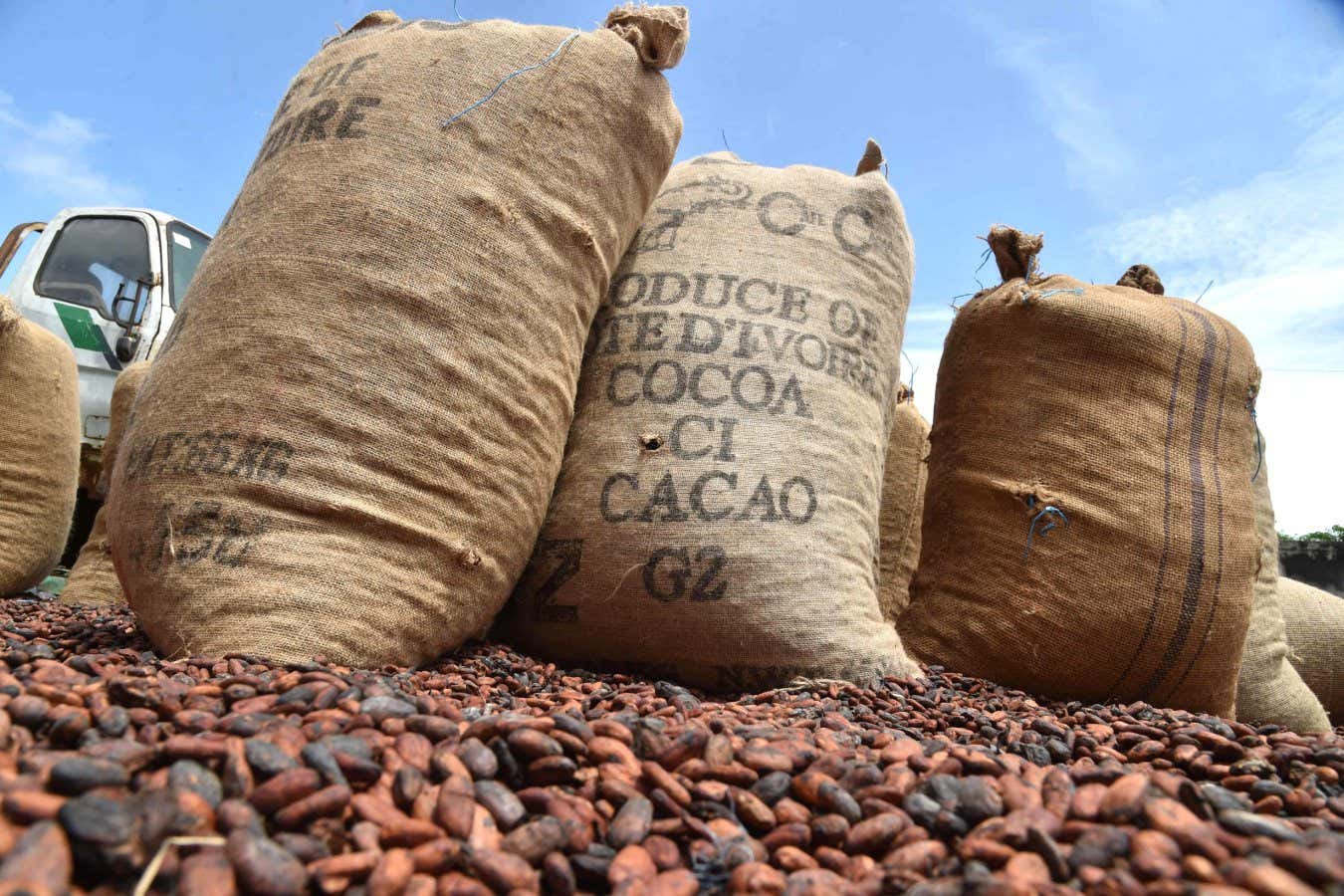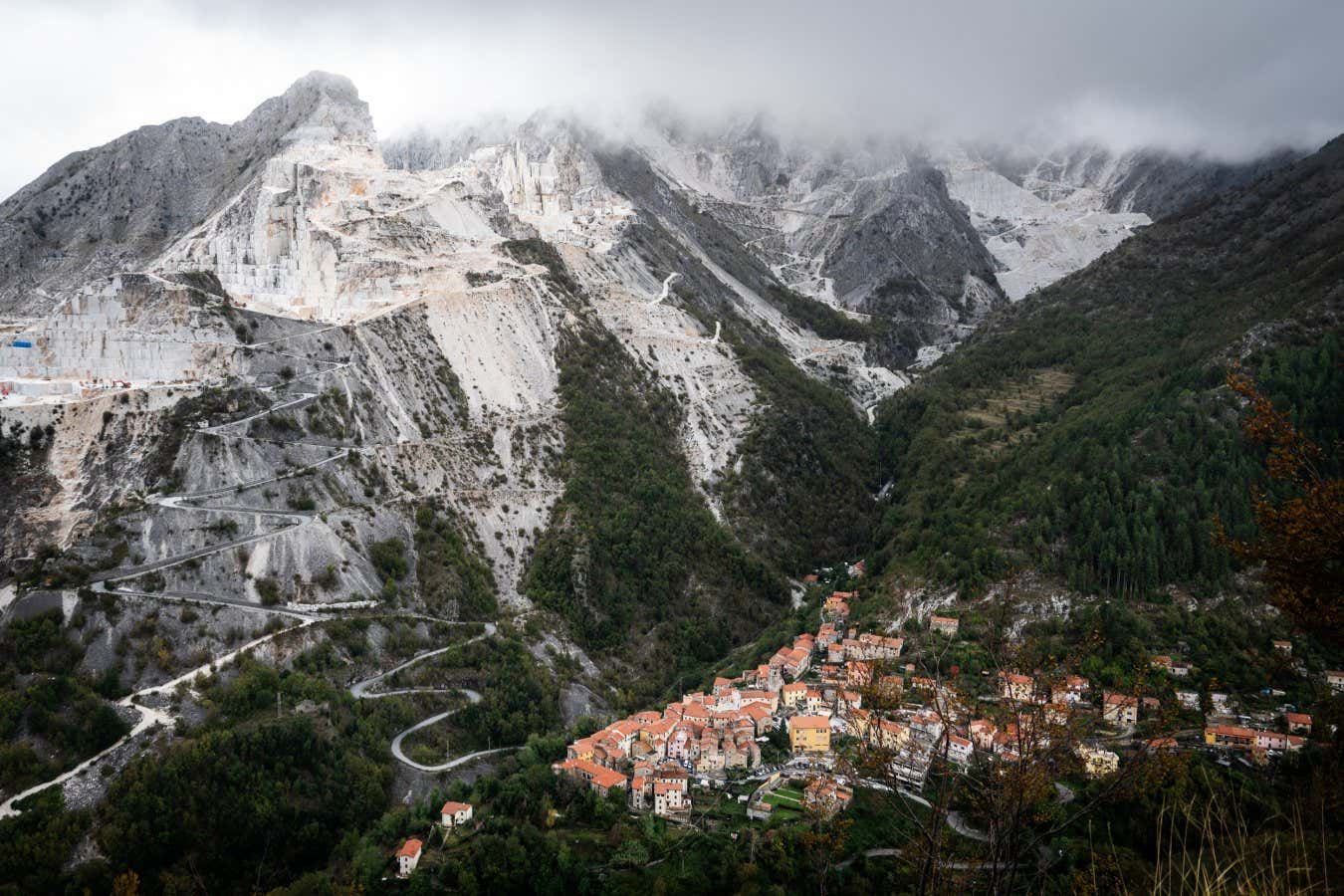Along a gentle bend of the Los Angeles River, in a stretch of land called Taylor Yard, a sound like a high-pitched record scratch can just be heard above the cacophony of city life. This is the call of the least Bell’s vireo, an olive-gray songbird that is only five inches from tip to tail. The riparian species native to Southern California has lived an endangered existence for more than 40 years. Now, the small bird’s return here symbolizes a new future for one of the country’s most maligned waterways.
Before the concrete tide of urbanization washed over the Los Angeles River Basin, the river-fed wetland that was here represented the perfect habitat for this rare species. But for the past century, this area was one of the largest rail yards in the region, and as an expanding city grew right up to the river’s now concrete-laden banks, the vireo all but disappeared.
Until, suddenly, it returned. The 2007 creation of Rio de Los Angeles State Park, which is itself part of the sprawling rail yard, set the stage. In the early 2010s someone reported hearing the vireo’s memorable call. A few years later, a photo captured a vireo mid-song, and in 2022 a nesting pair took refuge in a tree. This year, the news was even better.
“We actually saw fledglings,” says Evelyn Serrano, the director of the Audubon Center at Debs Park in Los Angeles. “We saw the nest and we saw the babies, so we were very excited. It’s tough to survive in an urban environment when you’re a little bird like that, but it’s definitely possible.”
A least Bell’s vireo (Vireo bellii pusillus) sings at Taylor Yard on March 22. California placed this songbird on its endangered species list in 1980, but this rare vireo has recently returned to central L.A. thanks to habitat restoration and the return of the natural riparian ecosystem along a section of the Los Angeles River. Alecia Smith / Audubon California/https://tf-cmsv2-smithsonianmag-media.s3.amazonaws.com/filer_public/be/29/be29cdf3-c370-4fe4-8a18-8c028f2c9166/web_aud_ca-2024_least-bell_s_2-vireo_photo-alecia-smith.jpg)
Serrano is part of the local Audubon Center’s long, ongoing effort to rewild Taylor Yard, especially within the existing state park. Over the years the center has planted 1,000 endemic plants including 200 native trees as well as mule fat and mugwort for nest protection, and black sage and golden currant for food sources. But the nearby river—one of the few naturalized, soft-bottom sections of what is otherwise a concrete channel—is what really allows the vireo to thrive.
“[The vireo] needs to be near water, and that specific part of the river that’s soft-bodied has more water than other parts,” Serrano says. “This bird also lives in a very specific elevation, and it just so happens that all of those things … are all in one place.”
The return of the least Bell’s vireo shows what’s possible along a more natural Los Angeles River, and Taylor Yard represents the city’s largest opportunity to create vital habitat for many of its vulnerable endemic species. For years, a partnership of government groups and nonprofits has pushed to make the remaining 100 acres of the abandoned rail yard the “crown jewel” of L.A.’s river restoration project. The resulting collective, known as the 100 Acre Partnership, hopes to complete the restoration by 2028, which is just in time for the L.A. Olympic Games. The project is just the latest effort to create a new vision of Los Angeles that’s been in the works for nearly a century.
What was lost
Long before its starring role as an entertainment mecca, the basin that makes up Los Angeles was known for its river.
Fifty-one miles of free-flowing waters formed the beating heart of an 871-square-mile watershed transporting rainwater and snowpack from the nearby Santa Monica, Santa Susana and San Gabriel Mountains. Fed by various washes and tributaries, the river formed rich wetlands throughout the San Fernando Valley in the north all the way to the lower delta. At most times a trickle and at others a flood, the L.A. River meandered all over the region, either emptying into San Pedro Bay or even veering west toward Santa Monica Bay.
Because of the river and the region’s separation from the rest of California by mountains to the north, this alluvial floodplain became one of the most biodiverse regions in the world, filled with stunning amounts of endemic flora and fauna. Eventually, a native tribe known as the Tongva—also called Gabrieleño or Kizh—settled throughout the river basin, which included around 5,000 people spread across some 100 villages. They built their largest village, named Yaanga, in hills along the river near where Los Angeles City Hall stands today.
Although many picture L.A. with its vast sandy beaches to the west, the old Pueblo de Los Angeles actually formed further inland, as the river provided the necessary water for the entire settlement. This is why Candice Dickens-Russell, the CEO of the nonprofit Friends of the L.A. River, describes the river as the city’s “origin story.”
“We’re one of the only ‘coastal’ cities that’s not on a coast,” Dickens-Russell says. “We’re an inland downtown because of the river.”
For centuries, the river provided the water needed to grow crops, irrigate orchards and sustain a growing population. However, ignoring the Tongva practice of building slightly uphill from the river in recognition of its meandering course, the expanding city built up right along its banks. And as that city grew, its tolerance for the river’s floods diminished.
After a devastating flood in 1914, calls for flood control efforts grew louder, and the city formed the Los Angeles County Flood Control District a year later. In the following decades, the city began channelization and levee efforts and even built a few dams, but nothing substantial enough to fully prevent floods. Then, the river met its first major crossroads.
In 1930, Frederick Law Olmsted Jr., the son of the famous Central Park landscape architect, devised a sprawling plan to build parks and public spaces along the river with green flood prevention measures, saying at the time that “continued prosperity in Los Angeles will depend on providing needed parks.” The timing of the proposal couldn’t have been worse. While L.A. already had a long history of privileging private real estate over public spaces, the stock market crash only months earlier soured any remaining appetite for Olmsted’s vision.
After two more destructive floods in 1934 and 1938, the Army Corps of Engineers slowly began encasing the L.A. River in concrete—one mile at a time—until its completion in 1960.
Located in South Gate, Lynwood and Downey at the confluence of the Los Angeles River and the Rio Hondo tributary (right), this area is one concrete-laden section of the river where Frank Gehry Partners has proposed building a platform park. Darren Orf/https://tf-cmsv2-smithsonianmag-media.s3.amazonaws.com/filer_public/3a/f2/3af2dfc0-6cf7-4540-b8cf-72ad48d8ef7b/web_lariverwhereplatformparkproposed.jpg)
“Olmsted’s vision is what L.A. could have been,” says Ben Harris, a senior staff attorney at Los Angeles Waterkeeper, an environmental watchdog for the region’s coastal and inland waters. “It was bad circumstances, but the right vision.”
The right vision
As the river receded from the landscape, it also faded from the minds of many Angelenos who lived within its basin. Dickens-Russell, who grew up in Cerritos just east of the river, says she was totally unaware of its existence when she was younger.
“[The river] was not in my consciousness at all,” Dickens-Russell says. “It wasn’t until I went away for college, came home and started working in the environmental world in L.A. that I started to hear about the river and Friends of the L.A. River.”
The first major nonprofit group to start restoration along the river’s 51 miles, Friends of the L.A. River wouldn’t have been possible without the trailblazing work of Lewis MacAdams. A journalist, political activist and poet, MacAdams founded the nonprofit in 1986 as an act of civil disobedience. He envisioned a city with a restored river where animals and Angelenos could seek refuge, so that year he cut through a wire fence separating the river from the city and declared the channel a public space. In his poetry, he describes his organization’s role as the river’s emissary.
… we address ourselves to the river. / We ask if we can / speak on its behalf / in the human realm. / We can’t hear the river saying no / so we get to work.
And for 40 years, MacAdams was the river’s relentless advocate. In the mid-1990s, when the Army Corps of Engineers began scraping vegetation away from the soft-bottomed section of the river, MacAdams placed himself in front of the bulldozers. Meanwhile, he tirelessly fought for the waterway to be recognized as a natural river.
“He’d show up at meetings with the Army Corps and the Department of Public Works,” says Jon Christensen, an environmental journalist and historian with the Institute of the Environment and Sustainability at the University of California, Los Angeles, “and they’d talk about the ‘flood control channel’ and he’d just say ‘river.’”
In keeping with this activist spirit, kayakers in 2008 proved that the L.A. River was a navigable waterway by traversing its entire 51 miles. Two years later, the Environmental Protection Agency agreed and granted the river certain protections under the U.S. Clean Water Act, which strengthened the ability of local, state and federal agencies to fight against pollution and other forms of environmental degradation.
Though just one element of a bigger plan, Harris points out, Taylor Yard is a really good opportunity to examine the challenges of restoring the river—for both animals and the estimated one million people that live along the waterway’s path
Transforming Taylor Yard
In 1911, Southern Pacific Railroad bought land owned by Taylor Milling Company and adopted the name for its eventual 243-acre rail yard. After the rail yard shut down in the mid-1980s, parts of it were parceled off, with the least toxic areas being sold first. Some parcels became schools, apartments and even Rio de Los Angeles State Park itself. Then in 2017, after four years of negotiations, the City of L.A. purchased a long sought-after parcel from Union Pacific, a 42-acre stretch of land sandwiched between the current park and the river.
Today, the 100 Acre Partnership, a joint effort by the City of L.A., Mountains Recreation and Conservation Authority (MRCA), and the California Department of Parks and Recreation, is overseeing the creation of the Paseo del Rio, the name of the planned park that encompasses that parcel and one bow-tie-shaped parcel that connects to the north. The final design, approved in 2023, contains walking paths along the river, a community pavilion, a sloped meadow incorporating the rail yard’s old turntable and a wetland habitat fed by stormwater from the surrounding community. Along the northern section of the planned park, the Nature Conservancy is developing an area that will showcase how stormwater can be cleaned using natural systems.
Crucially, the Paseo del Rio at Taylor Yard also reconnects the surrounding community with the L.A. River and provides even more vital habitat for riparian birds like the vireo, but also osprey, and many other native species including side-blotched lizards, pacific chorus frogs, big brown bats and arroyo chub fish.
The one thing that stands between the present and this bright, green future is the land’s industrial past. After decades spent as a rail yard, part of the land is simply too toxic for biking, running and lounging. Lead and petroleum hydrocarbons at the site lie in shallow soil, meaning they’re easier to remove. But volatile organic compounds sink lower into the ground, and this creates complicated layers of pollution, which makes cleanup difficult and expensive. Brian Baldauf, chief of watershed planning for the MRCA, says the partnership is still working with the U.S. Department of Toxic Substances Control to get a cleaning plan approved.
“This was the active working heart of the rail yard,” Baldauf says. “When the city purchased it, one of the requirements of Union Pacific was that the city would be responsible for cleaning it up.”
He adds that the 100 Acre Partnership and the Department of Toxic Substances Control need to come up with a strategy for creating a safe site that can have new habitat over it. Once that strategy is in place, things can move quickly, according to Baldauf. If all goes according to plan, Taylor Yard will be a moving display for what the L.A. River could be—and just in time for the 2028 Games.
“The Olympics in Los Angeles is an important consideration for a lot of public work,” Baldauf says. “The city is going to be a showcase, and we want to have this project ready.”
A divided future
Today the L.A. River forms in Canoga Park in the San Fernando Valley and cuts around the eastern side of Griffith Park, before heading south through the soft-bottomed Glendale Narrows. Eventually, it makes its way through the Gateway Cities region before reaching Long Beach. In its course, the river passes through 17 cities, each with its own history and relationship to the river.
While environmental groups argue for a more natural river—one that can play host to humans and habitats alike—the river’s engineered role of moving massive amounts of water as quickly and safely as possible hasn’t changed, and that dichotomy has led to disagreement.
“We’ve inherited in the American West these hybrid systems—they are engineered and natural, and there is no rewinding the tape of history,” Christensen says. “What do we want out of these hybrid systems?”
Over the decades, various master plans—at the local and federal levels—have offered suggestions for addressing challenges found within these river communities. Some address green gentrification, which occurs when newly developed natural space brings in investment that eventually displaces the local community. A key example of this phenomenon, according to Christensen, is New York City’s High Line, an abandoned industrial train track renovated into an elevated park that sent nearby home prices skyrocketing. Other plans suggest searching for ways to introduce green space into park-poor areas, create arts and culture opportunities, and improve river access.
Taylor Yard is a rarity of sorts. Its 100 acres is unlike any other opportunity along the river basin—as most planned parks are well under 30 acres. And because Taylor Yard is designed to be an example of how to rehabilitate contaminated sites along the L.A. River, the project doesn’t feature some of the more controversial river restoration ideas that have percolated in recent years.
The most divisive example is the L.A. River Master Plan, originally commissioned by L.A. County, which outlines possible investments along the river. In 2015, the Los Angeles River Revitalization Corporation asked famous architect and longtime L.A. resident Frank Gehry to take the design reins for reimagining the L.A. River as part of the master plan. Some were excited by the idea of Gehry turning his attention to the river, but others worried the architect wasn’t a good fit.
“I would remind them that the last time there was a single idea for the entire river it involved 17,000 people pouring three million barrels of concrete,” MacAdams said back in 2016.
In 2022, environmental groups, including Friends of the L.A. River, East Yard Communities for Environmental Justice, the Nature Conservancy in California and Los Angeles Waterkeeper, pulled support for the L.A. River Master Plan, with the latter saying it “failed to treat the L.A. River as a natural and living river.”
A part of the dispute centered around the idea of “platform parks,” proposed by Frank Gehry Partners, that would effectively cap the river to provide green space. In other words, these parks create a concrete channel for water to pass under while the park on top remains undisturbed. The plan also includes new buildings, like the Southeast Los Angeles Cultural Center, to be constructed right along the river’s floodplain, and environmental groups argue that the plan doesn’t take out enough existing concrete. Los Angeles Waterkeeper and the Center for Biological Diversity swiftly sued Los Angeles County over its approved master plan.
Tensho Takemori, a partner at Frank Gehry Partners, acknowledges that a concrete-free river is the river everyone wants but says that when the firm looked at taking out all that concrete, they determined it just wasn’t possible if they wanted to also maintain the river’s flood management role.
“If you take out the concrete and put in grass or trees, it’s adding a significant amount of resistance … the water slows down, and it floods,” Takemori says. “To be honest, if we could have figured it out—and if that was scientifically possible—we would have proposed that.”
However, Harris and other activists believe that many ways remain to create a river that’s more natural than what’s currently proposed, including improved river management techniques upstream and expanded stormwater capture technologies. For years, L.A. has also invested millions transforming into a “sponge city” by replacing concrete with more permeable surfaces. During a particularly rainy stretch in early February this year, the city captured 8.6 billion gallons of water, which is enough to sustain 100,000 homes for a year.
“Now is the time to be ambitious and work toward those goals,” says Kelly Shannon McNeill, associate director of Los Angeles Waterkeeper. “We have unprecedented federal funding to invest in green resilient infrastructure, something we haven’t seen since the New Deal.”
Although conversations around the river’s fate are much more centered on revitalization than in the past, the debate about its future remains a contentious one.
A river runs through it
Standing on the Taylor Yard Bridge, completed in 2022, Baldauf looks at the slowly meandering L.A. River as it passes by what could become the crown jewel of the city’s restoration efforts. With the smoldering midafternoon sun overhead, egrets, cormorants and herons mingle in the river below as the swaying reeds are barely heard over passing traffic. With a swoop of its wings, a heron takes flight.
“This is why so many people fight for it. They’re inspired by it. They come here to contemplate,” Baldauf says. “The fact that there’s nature in the city and that we’re watching a great blue heron fly right over us.”
A naturalized section of the Los Angeles River just south of Taylor Yard Darren Orf/https://tf-cmsv2-smithsonianmag-media.s3.amazonaws.com/filer_public/f4/e1/f4e14324-e39a-474b-a605-3d1da2a7f56e/web_lariver_4.jpg)
While the shape of the river’s future continues to be argued in the courts—of both law and public opinion—plans are not on hold. Major ecology efforts like the Los Angeles River Fish Passage and Habitat Structures Design Project are creating spaces to aid in the return of the steelhead trout. And thousands of volunteers every year participate in Friends of the L.A. River’s Great L.A. River Cleanup, the largest urban river cleanup event in the nation.
And while Taylor Yard remains the river’s largest restoration opportunity, other areas are becoming more and more wild. The Dominguez Gap Wetlands in Long Beach sustain local plant and animal habitat; a 30-acre passive park in South Gate called Urban Orchard has fruit trees growing at the river’s edge; the Tujunga Wash Greenway and Stream Restoration Project recharges the San Fernando Valley Groundwater Basin; and vegetated ditches called bioswales in Caballero Creek Park filter stormwater pollution.
Each improvement is a valuable opportunity for the river’s endemic residents, including the small-yet-resilient vireo, to return to the City of Angels.
“We are nature, and we live in nature—even the nature we’ve created for ourselves,” Serrano says. “We must be making some kind of change that is making it easier for all of our wildlife neighbors to be present in the spaces we’ve created.”








Leave a Comment